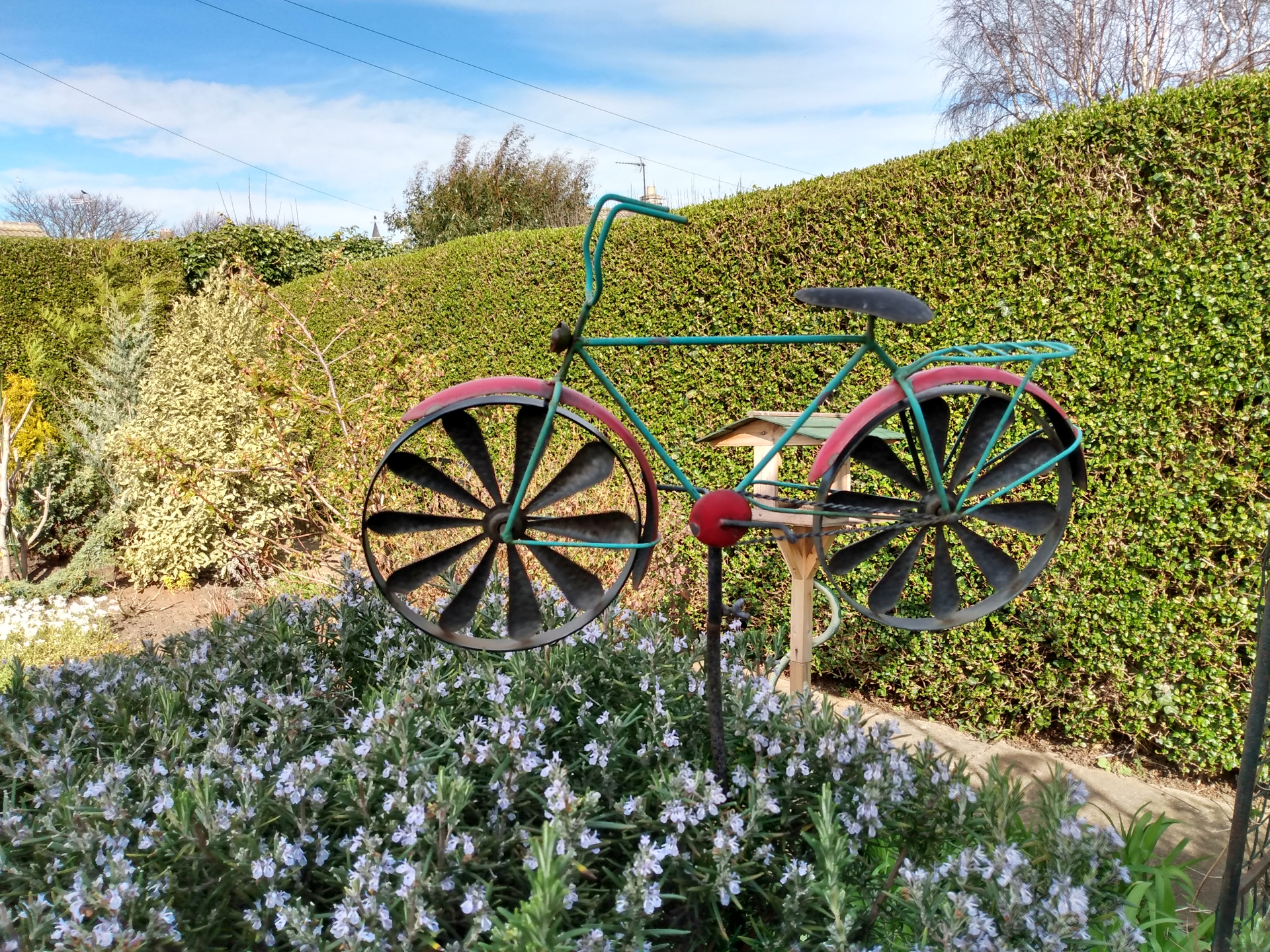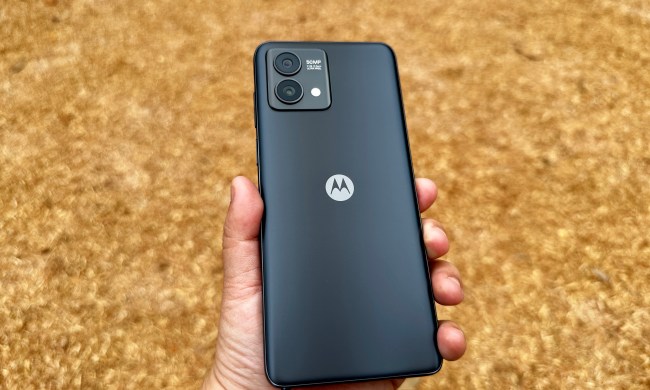- Very affordable
- Good performance
- Solid camera
- Great battery life
- No NFC
- Ugly notch
It may be the cheapest and smallest member of the G7 family, but the Moto G7 Play is also the biggest bargain. At $200, it’s the spiritual successor of the original Moto G phone – a device that packed impressive hardware into a chubby plastic body. You won’t find glossy curves or metallic highlights here, but you will find internal specs that are unmatched in this price range.
Just like the Moto G7 and the Moto G7 Power, the Moto G7 Play not only has to beat out its relatives to secure your affection — it has to fend off serious budget competition from Nokia and Honor. And it does. There are compromises with all phones in this price category, but if your finances simply won’t stretch beyond $200, this is the right phone for you.
Pocket-sized plastic, passable display
With the Moto G7, Motorola earned points for churning out a curved glass beauty capable of rubbing shoulders with much more expensive phones. The Moto G7 Play has some elements in common, but it’s more identifiable as a budget phone.
It’s the smallest of the G7 phones and I like that. It’s comfortable and easy to manage with just one hand, the plastic finish is warm to the touch, and the textured back adds some grip. You’ll find the same signature round camera module protruding on the back with the classic M logo below, marking out the fingerprint sensor. The concentric lines are practical, not just adding grip, but also reducing smear marks, which are commonplace on the glossy plastic of the G7 Power or the glass of the G7.
On the left edge there’s the SIM tray and MicroSD card slot. Up top you’ll find the headphone port. On the right there’s the textured power button with the volume rocker above. The bottom edge hosts the USB-C charging port, which is a welcome standard that means you’ll never have the cable the wrong way up again. If you also have a laptop that charges via USB-C, you can use the same cable.
The G7 Play has the same processor as the G7 which costs $100 more.
There’s a 5.7-inch LCD screen on the front with a large notch at the top, with an earpiece flanked by the camera lens and flash. There’s a large bezel at the bottom bearing the Motorola brand, which makes you wonder about the need for a notch. There are also fairly thick bezels around the sides of the screen.
While the display has a somewhat disappointing 1,512 x 720-pixel resolution, there aren’t many phones with a higher resolution at this price. I also found that the low resolution wasn’t as noticeable with the Moto G7 Play as it was with the larger G7 Power. It translates to 294 pixels-per-inch (ppi) compared to 279 ppi for the G7 Power, and 268 ppi for the slightly cheaper Nokia 3.1 Plus.

The screen on the G7 Play gets plenty bright. Colors are a bit over-saturated out of the box, but you can tweak them in the display settings. Even after changing to the natural setting, my review unit has a warmer display than the Moto G7.
Compared to its big brothers, the Moto G7 Play has a large, wide notch, so the extra screen flanking it isn’t very useful most of the time. All in all, this is a decent design and display, but I can’t say that without the qualifier, “for the price.”
Best in class performance
The best thing about the Moto G7 Play is that it has exactly the same processor as the Moto G7 which costs $100 more. That means performance is broadly comparable. The Qualcomm Snapdragon 632 chip is much more capable than most of the Mediatek processors you tend to find in devices at this price.

Where Motorola has economized is the RAM, dropping a GB with each model: The G7 has 4GB, the G7 Power has 3GB, and the G7 Play makes do with 2GB. You can feel the difference if you use them consecutively as I have. The G7 Play takes a little longer to open games, snap photos, and switch between apps. But for anyone upgrading from an older device, this won’t be a problem. Thankfully, there’s a decent amount of storage — 32GB to be exact — and there is a MicroSD card slot if you need more.
For the most part, the Moto G7 Play operates smoothly. I played Asphalt 9: Legends and it defaulted to a low graphical quality. I reset it to high and was pleasantly surprised to find that it ran well with just an occasional dropped frame and a little stutter at the end of each race. I also played Project Highrise and was able to construct a huge skyscraper without any hitches.
Here are some benchmark results:
- AnTuTu 3D Bench: 98,111
- Geekbench CPU: 1,189 single-core; 4,227 multi-core
- 3DMark Sling Shot Extreme: 546 (Vulkan)
Not only is the Moto G7 Play on a par with the other G7 phones, it significantly outperforms comparably priced phones like the Nokia 3.1 Plus and the Honor 7X. In some benchmarks it even outperforms much more expensive options like the Sony Xperia 10.
I didn’t encounter any stability issues with the Moto G7 Play, but unfortunately the same Wi-Fi problems I had with the Moto G7 and G7 Power reared their ugly head here. For some reason the G7 Play’s Wi-Fi connection will occasionally drop. It connects again without a problem if I wait or tap to reconnect, but I can’t find any reason for it happening in the first place. I contacted Motorola, but they are equally at a loss as to why this is happening. For the record, I’m using a Google Wi-Fi router and have never encountered this issue with any of the other phones I’ve reviewed.
It’s a minor quibble, but it can’t go unmentioned. Wi-Fi problems aside, the Moto G7 Play is a great performer. To put it simply, this is the best performance you’ll find for $200.
Software extras versus update speed
The Moto G7 Play runs Android 9.0 Pie with a couple of minor additions on top. I like the near stock Android experience the G7 Play offers and the extras are potentially handy.
You’ll find a Moto app here that offers lots of different gesture shortcuts, such as chop twice to turn on the flashlight, or flip the phone over to silence it. There are also display options to enable you to interact with notifications on the lock screen or keep the screen on while you’re looking at it. The hands-free Moto Voice feature is reserved for the more expensive Moto G7.
I expect most people will be happy with the software experience here, but I would trade the extras for faster updates in a heartbeat. The problem is that Motorola doesn’t have a great update record. The Moto G7 Play is in line to get Android Q, but it’s unlikely to get anything beyond that. Not to mention the Android Q update will probably take a few months after release to roll out.
It would be better for phone buyers if budget manufacturers embraced the Android One program, which guarantees at least two Android version updates and security updates for at least three years. That lends some real longevity to your phone. If you like the sound of that, then last year’s Nokia 5.1 Plus may be worth seeking out. Sadly, Nokia was persuaded to drop Android One for the Nokia 3.1 Plus, which only works on Cricket Wireless.
What the Nokia 3.1 Plus does have, that the Moto G7 Play doesn’t, is NFC support for making payments via Google Pay and sharing files via Android Beam. I’m disappointed that Motorola has skipped NFC in the whole G7 range in the U.S.
Camera is a mixed bag
Budget phones have traditionally compromised in the camera department, but we’ve seen steady improvements over the last couple of years as the standard of smartphone photography has soared to new heights. The Moto G7 Play comes equipped with a 13-megapixel camera with an f/2.0 aperture.
It’s capable of capturing good shots in ideal lighting conditions. The level of detail is fairly good, and the colors are vibrant. I was quite pleased with its close-up performance, too, though you need to choose your subject and make sure to tap on the screen to direct the focus. It struggles with movement, either from the subject or photographer, so blurry results are quite common.
The Moto G7 Play camera is also bad at dealing with contrasting light conditions, often blowing out, or overexposing, the lighter areas.
For this landscape shot it compares quite favorably to the more expensive Moto G7. But, just like the rest of the G7 family, the big weakness is low-light performance. The minute the light begins to fade you’ll see a lot of noise creep in and it simply can’t handle dark scenes at all.
The big difference between the Moto G7 Play and the more expensive Moto G7 in the camera department is that the G7 has a secondary lens for depth. It has an enormous impact on the quality of portrait shots.
I wish Motorola would just remove the portrait option from the camera app for the Moto G7 Play because it’s terrible. You’ll get much better results with the regular camera. As you can see in the portrait shots above, it has no clue about depth, and simply tries to define a face shape and then blur everything else. You can see exactly what’s wrong with that approach in the last photo where it focuses on the face on the left and blurs the face on the right, even though they’re at the same distance. I found the same problem with the single-lens Moto G7 Power.
Leaving the portrait mode aside, and you really should leave it aside, the Moto G7 Play has a solid camera compared to other phones at this price. You also get manual settings if you want to dip in and tweak things, a fun spot color mode that lets you pick a single color and turn the rest black and white, and the ability to record 4K video.
There’s also an 8-megapixel front-facing camera that’s fine for selfies.
Battery life is impressive
With the same 3,000mAh battery as the Moto G7, but with a smaller screen to power, I had high hopes for the battery life of the G7 Play, and wasn’t disappointed. The G7 Play got me through most days with plenty left in the tank.
The Moto G7 Play managed to last for 9 hours and 21 minutes in our video streaming battery test. That’s an excellent result, though we usually run the battery test at 1080p and the G7 Play maxes out at 720p.
It’s never going to compete with the stamina of the G7 Power, with its enormous 5,000mAh battery, but make no mistake, the G7 Play offers great battery life. None of the other budget phones we’ve tested have done this well.
There’s no support for wireless charging, and wired charging is fairly slow, maxing out at 10W, which means that the Moto G7 Play takes around two hours to charge fully from empty.
Price, availability, and warranty information
The Moto G7 Play costs $200 and is available from retailers like Best Buy, B&H Photo, and Amazon. You can also buy it directly from Motorola.
It comes with a standard one-year limited warranty for manufacturing defects and faults.
Our Take
The Moto G7 Play lacks the glamor of the Moto G7 and can’t go for quite as long as the Moto G7 Power, but it’s decently cheaper than both. You’re getting the best bang for your buck in terms of performance, battery life, and camera.
Is there a better alternative?
The closest competitor may be the Moto G7 Power, which is ideal if you want a bigger screen and even longer battery life, but it will cost you $50 more.
The Nokia 3.1 Plus is slightly cheaper, with nice build quality and NFC support, but it’s not as fast as the G7 Play and the battery life isn’t as good (it also only is available on Cricket Wireless). If you can find one, the Nokia 5.1 Plus is an excellent alternative with a dual lens main camera and Android One, but it’s not sold in the U.S.. Check out our best cheap phones guide for more.
How long will it last?
There’s no water resistance here, but the plastic body feels durable and if you get a case, you can expect this phone to last for two or three years. The only concern is that software updates may not continue for that long.
Should you buy it?
Ultimately, I think the Moto G7 Play is the best choice for most people with a strict $200 budget. It’s also ideal for parents seeking a reasonably priced phone for their kids. It offers substance over style and, if you can’t have both, substance is the way to go.
























